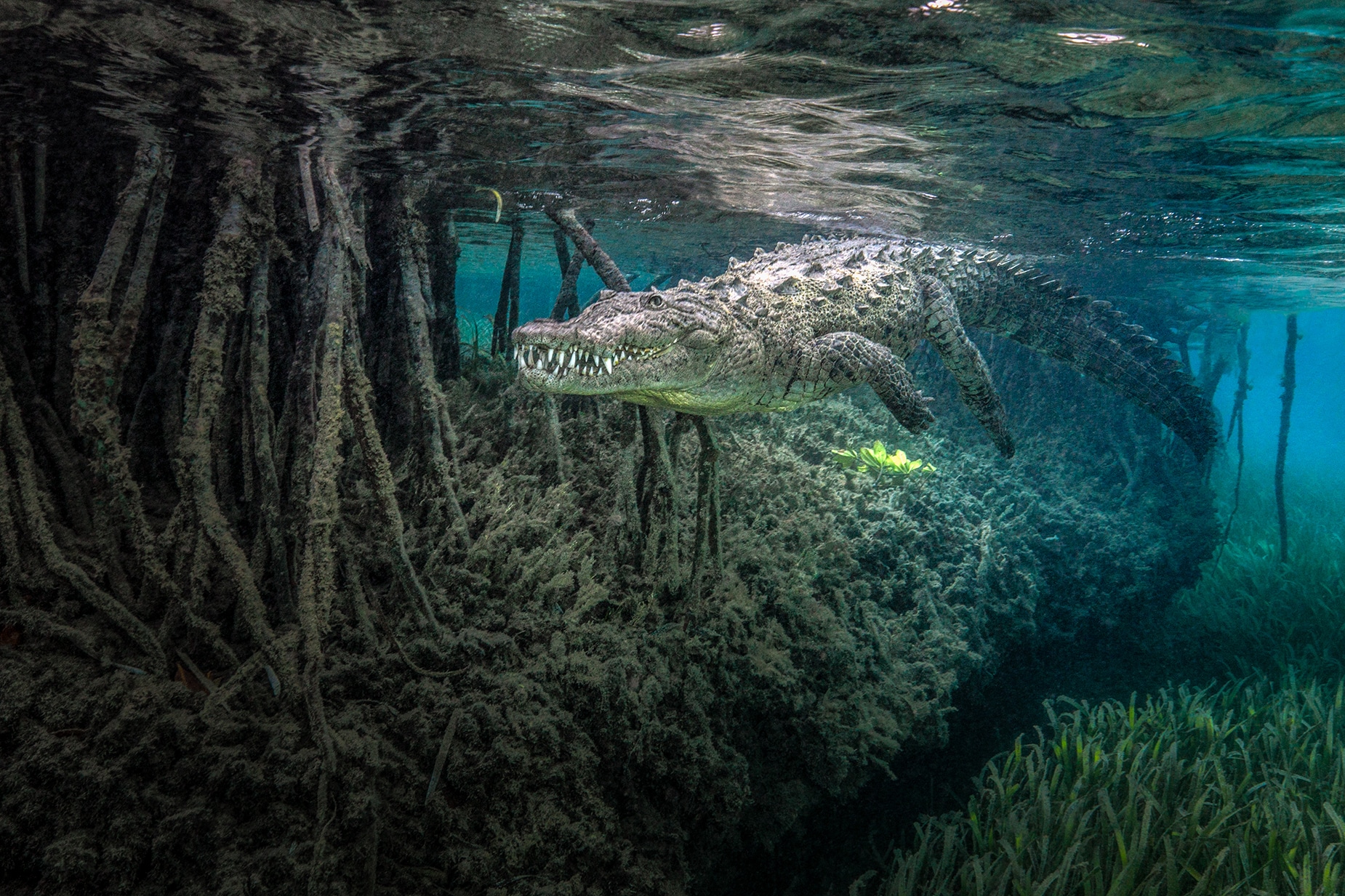Mangroves are among the most undervalued ecosystems on the planet. They help to reduce rising global temperatures, prevent food shortages and protect the world’s biodiversity. They are still considered by many as unimportant wastelands, but images have the power to tell a very different story (see also our previous blog post here).
The Mangrove Photography Awards 2020 has given us a fascinating insight into the world of mangroves from all corners of the earth. Jaguars in mangroves, grinning crocodiles, dancing trees and thousands of flamingos reclaiming a lost habitat are just some of the compelling and intriguing images from this year’s competition.
Mangroves are among the most productive and biologically important ecosystems on the planet and our aim is to inspire action to help protect these unique habitats. We wanted to offer a platform for anyone to help shine a light on moments and stories of our beautiful mangroves from all around the world. And we succeeded: entries showcased extraordinary wildlife; highlighted sustainable communities; exposed pressures that endanger these habitats; and celebrated conservation projects and approaches that aim to reverse the trend of mangrove loss.

Mangrove maze – Highly Commended in Mangroves & Communities – Janos Leo G. Andanar, Philippines
Cristina Mittermeier, one of our judges saw it as, “a chance for photographers to raise their voices for the protection of one of the most critical and threatened ecosystems. Through impactful imagery and visual storytelling, we can rally people to action, sparking empathy and connection to our natural world.” This is especially true in times like these, when much of the environmental news is pointing towards disaster. It sometimes just needs a photo, a magical or shocking moment captured in time, to help bring people together to share ideas and start a conversation.

Once Again Being a Mother – Overall Winner – Victor H. Luja Molina, Mexico
Victor Hugo Luja Molina has won this year’s competition with an image showing a relationship few people have ever seen. Once Again Being a Mother, shows a female jaguar in an intimate moment with one of her cubs amid a mangrove forest in Mexico. Victor spent two years trying to get the perfect shot of Janis, a female mangrove jaguar, when he finally captured this great moment of her with her cub. Victor says, “I love this picture because the jaguars that live in the mangroves here in Western Mexico are special and unique. This is one of the very few photos that exist of jaguars in mangrove ecosystems and I hope this image can inspire a new generation of conservation photographers.” The mangrove ecosystem in Western Mexico is facing huge conservation problems, with much of the mangrove being lost to urban development and illegal shrimp farms. Victor adds, “I hope that the image will raise awareness of the importance of mangroves to jaguars here, but also the vulnerability of these habitats.”

Welcome Grin – Winner in Mangroves & Wildlife – Jenny Stock, Cuba
Jenny Stock, our wildlife category winner, snapped an incredible image of an American crocodile, which appears to be grinning whilst swimming along the bank where the ocean meets the mangrove trees. The image was taken in a mangrove forest in Cuba, an important habitat for crocodiles, where they use the mangrove forests for all aspects of their life cycle. Jenny says, “It was my first encounter with a crocodile in the water and it was completely exhilarating. Being up close to such a powerful animal will make your heart race, they move incredibly fast so you can’t take your eyes off them.”
This year saw a huge rise in the number of underwater photographs submitted, giving viewers an insight into their complex root systems, their roles as marine nurseries, and their intrinsic connections with habitats like seagrass meadows and mudflats.

The Dancing Mangroves – Winner in Mangroves & Landscapes – Harry Pieters, Indonesia
By harnessing the creativity, determination and commitment of our passionate photographers and conservationists, Mangrove Action Project wants to show the diverse beauty of mangroves and to inspire action to protect these unique ecosystems.
We do hope that you enjoy some more of the photos that were submitted this year. It is our genuine hope that these amazing images encourage you to find out more about the planet’s coastal forests and get involved in their preservation.
While they cover only 0.1% of the earth’s land surface, mangroves are one of our planet’s most powerful tools to help combat environmental emergencies – from climate change to replenishing our oceans. With over half of our global mangrove forests already gone, mangroves urgently need our help.
For more photos check out: https://mangroveactionproject.org/2020-worldwide-mangrove-photography-competition-winners-shortlist/
Or watch a video of our Award winners: https://youtu.be/DGrKIDUtYjo


